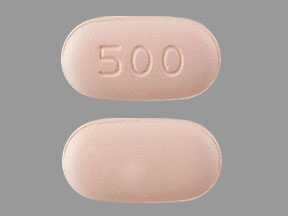Capecitabine and Alcohol/Food Interactions
There is 1 alcohol/food/lifestyle interaction with capecitabine.
Multivitamins With Minerals Capecitabine
Major Drug Interaction
Products containing folic acid may increase the effects of capecitabine. You may be more likely to develop serious side effects such as anemia, bleeding problems, infections, and nerve damage when these medications are used together. Contact your doctor if you experience severe nausea and vomiting, diarrhea, paleness of skin, fatigue, dizziness, fainting, unusual bleeding or bruising, blood in the stools, fever, chills, body aches, flu-like symptoms, skin reactions, mouth ulcers or sores, and/or numbness, burning or tingling in your hands and feet. You may need a dose adjustment or more frequent monitoring by your doctor to safely use both medications. It is important to tell your doctor about all other medications you use, including vitamins and herbs. Do not stop using any medications without first talking to your doctor.
Switch to professional interaction data
Capecitabine drug interactions
There are 294 drug interactions with capecitabine.
Capecitabine disease interactions
There are 7 disease interactions with capecitabine which include:
- infections
- coronary artery disease
- myelosuppression
- renal dysfunction
- dehydration
- hepatic dysfunction
- dihydropyrimidine dehydrogenase (DPD) deficiency
More about capecitabine
- capecitabine consumer information
- Check interactions
- Compare alternatives
- Pricing & coupons
- Reviews (65)
- Drug images
- Latest FDA alerts (1)
- Side effects
- Dosage information
- During pregnancy
- Drug class: antimetabolites
- Breastfeeding
- En español
Related treatment guides
Drug Interaction Classification
| Highly clinically significant. Avoid combinations; the risk of the interaction outweighs the benefit. | |
| Moderately clinically significant. Usually avoid combinations; use it only under special circumstances. | |
| Minimally clinically significant. Minimize risk; assess risk and consider an alternative drug, take steps to circumvent the interaction risk and/or institute a monitoring plan. | |
| No interaction information available. |
See also:
Further information
Always consult your healthcare provider to ensure the information displayed on this page applies to your personal circumstances.


